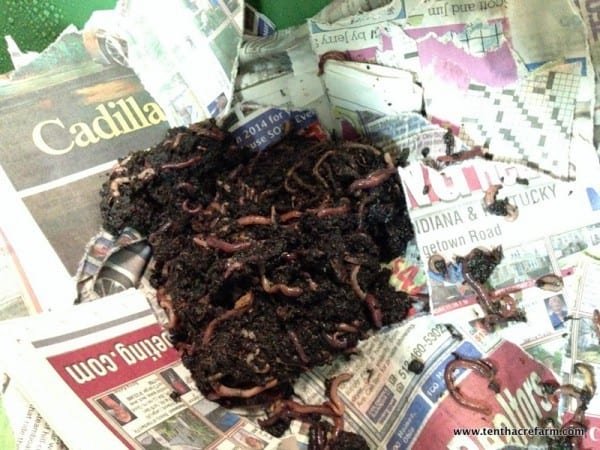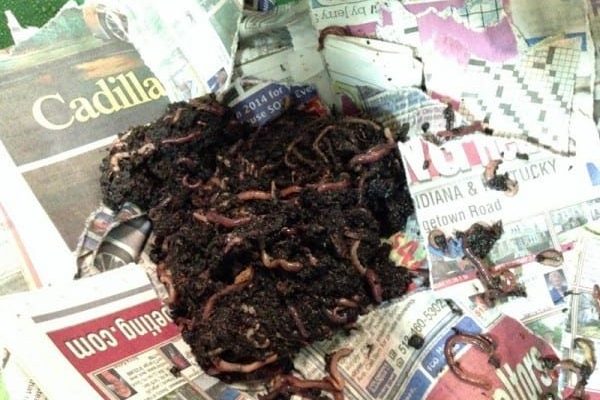
Worm bin worms, or *red wigglers* as they are commonly known, are the rock stars of composting. They break down organic waste and create rich, nutritious soil known as worm castings. However, identifying them in the wild or in your compost bin can be challenging. With multiple species and similar appearances, you might find yourself scratching your head, wondering if you’ve got the right worm. Let me guide you through this fascinating—but sometimes perplexing—world of worm identification.
Why Identifying Worms in a Worm Bin Matters
Understanding the types of worms in your bin is essential for proper composting. Different species have unique abilities to break down various materials. For instance, red wigglers (Eisenia fetida) thrive in moist, organic-rich environments and can eat their body weight in food scraps daily. This makes them excellent for indoor worm bins. On the other hand, earthworms (Lumbricus terrestris) prefer to live in soil rather than feeding on compost.
When you correctly identify the worms in your bin, you can tailor their care more effectively. If you mistakenly think you have red wigglers but have introduced a different species, you may unintentionally hinder the composting process. Plus, being able to identify whether your worms are healthy or stressed is crucial. Healthy worms are lively and active, while stressed ones may stay buried and exhibit less movement.
Here’s the thing: If you’re serious about composting, knowing your worms isn’t just a nerdy hobby—it’s a vital skill.
Common Types of Worms Found in Worm Bins
While there are many types of worms, let’s focus on those most commonly found in worm bins.
- Red Wigglers (Eisenia fetida): These are the stars of composting and can consume large amounts of organic matter quickly.
- European Nightcrawlers (Eisenia hortensis): Slightly larger than red wigglers, these worms are also great for composting but may not work as quickly.
- Common Earthworms (Lumbricus terrestris): Not typically used in worm bins since they prefer soil environments, they can sometimes find their way into compost.
Each type of worm plays a different role in the composting ecosystem. Knowing these distinctions can help you maintain a thriving worm bin. For instance, if you’re solely using red wigglers, but find some nightcrawlers sneaking in, you might want to remove them to keep the environment optimized for your red wigglers.
Physical Characteristics to Look For
So, how can you identify a worm bin worm when you see one? Look closely at their physical characteristics.
Visually, red wigglers are smaller and typically reddish-brown, with a thinner, elongated body compared to their earthworm counterparts. They often appear more active and squirmy, which is a good sign of health. Nightcrawlers, on the other hand, are larger, can grow up to 8 inches long, and have a thicker body that’s often lighter in color.
Here’s a tip: When you’re examining worms, consider their movement. Red wigglers tend to wriggle around quickly, while nightcrawlers move more slowly. If you notice a worm that remains mostly still, it could be stressed or unhealthy.
Environmental Factors Affecting Identification
The environment in which a worm lives can significantly affect its appearance and behavior. For example, the moisture level of your worm bin can influence how active your worms are.
Here are a few environmental factors to consider:
- Moisture Levels: Worms thrive in moist conditions. If your bin is too dry, they may appear lethargic or burrow deep into the bedding.
- Food Sources: Different foods can affect worm color and size. If you’re feeding them a diet rich in coffee grounds, for instance, they might take on a darker hue.
- Temperature: Ideal temperatures for worms are between 55°F and 77°F. Extreme temperatures can lead to stress, affecting their activity and behavior.
Maintaining an optimal environment can help you not only spot the right worms but also keep them healthy.
Common Mistakes When Identifying Worms
Even seasoned composters can make mistakes when identifying worms. Here are some common pitfalls to avoid:
– Assuming All Worms Are the Same: Not all worms are created equal. Just because a worm is wriggly doesn’t mean it’s a red wiggler. Take the time to look closely and note the characteristics.
– Ignoring Behavior: Some worms might appear similar but act differently. If a worm is sluggish, it may not be a good fit for your bin.
– Forget to Check the Bedding: Sometimes, the bedding can affect the appearance of worms. For instance, if you have coarser bedding, worms may have a harder time burrowing and may appear less vibrant.
Taking the time to properly analyze and observe your worms can save you from potential identification errors.
Tips for Effective Worm Identification
Want to sharpen your worm-spotting skills? Here are some helpful tips to get you started:
1. Use a Magnifying Glass: Sometimes the small details make all the difference. A magnifying glass can help you identify specific features.
2. Research: Familiarize yourself with different species through online resources or local gardening clubs. They often have invaluable insights.
3. Practice Patience: Worms can be elusive. Spend time observing them in their natural habitats, or in your compost bin, to understand their behavior better.
4. Take Notes: Keep a journal of your observations. Noting the size, color, and behavior can help you remember details for future reference.
Remember, the more you practice, the more confident you’ll become in your identification skills.
Final Thoughts on Identifying Worm Bin Worms
Identifying worm bin worms might seem like a challenge at first, but with a little observation and knowledge, you can feel like an expert in no time. Understanding the different types, their environmental needs, and distinguishing features can enhance your composting experience.
By nurturing the right types of worms, you’re not just supporting your compost bin—you’re helping create a more sustainable environment. So grab a cup of coffee, peer into your worm bin, and get to know your wriggly friends better. Who knows? You might just find yourself enjoying the process a lot more than you expected!

